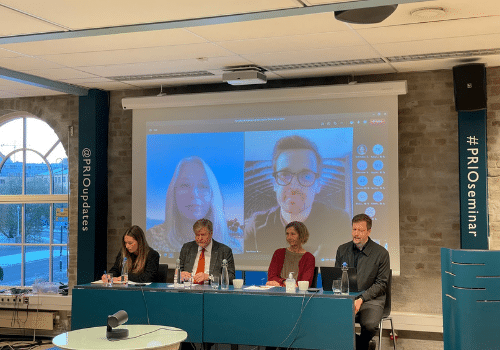
The NCHS Annual Meeting provided for many productive discussions about the impact of counterterrorism measures on humanitarian efforts.

This paper analyses the diffusion and strategic value of satellite technology in humanitarian contexts.
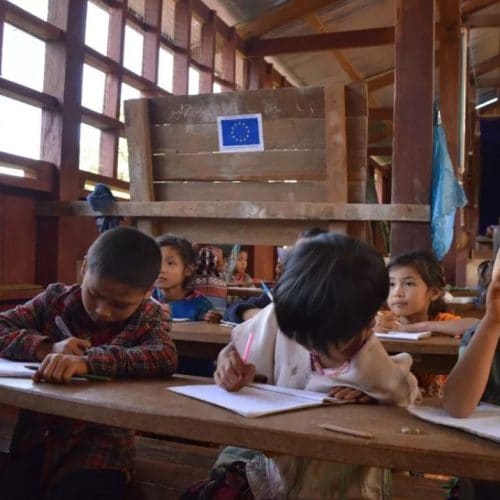
This PRIO blog examines why children’s education is a relevant concern for the Security Council and why education is a question of security.

The Culture House in Oslo is screening ‘Mama’, a film about Afghan refugees in Norway, followed by a panel discussion featuring NCHS Director, Antonio De Lauri.

International law scholars have published a series of essays examining legal and policy issues relevant to the current and future pandemics and migrant rights.
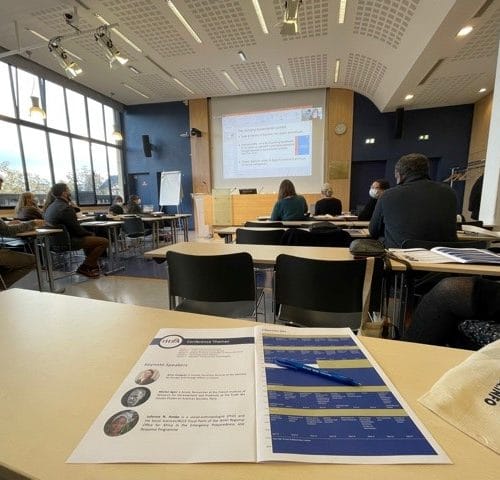
The International Humanitarian Studies Association Humanitarian Studies Conference is underway! Here is where you can see our NCHS members.
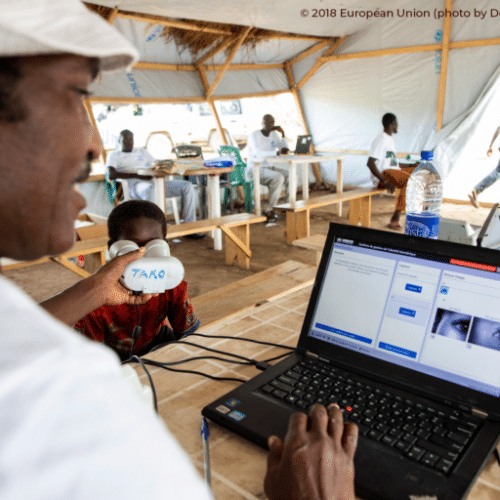
NGOs and UN agencies have collected personal data of millions of people in the global South. A new ICSC blog explores if this has been done with due prudence?
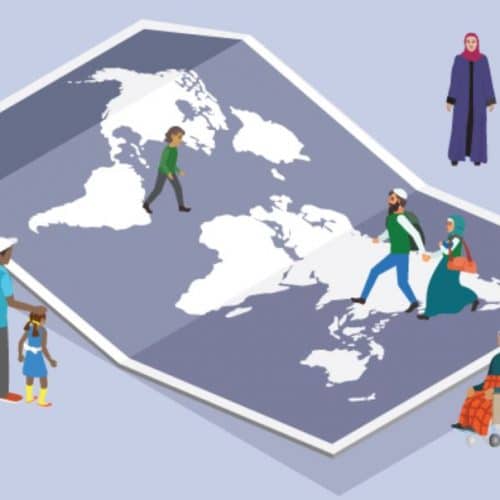
Join this seminar on 3 November hosted by the Institute for Social Research to launch the report “Vulnerable protection seekers in Norway: Regulations, Practices and Challenges”.
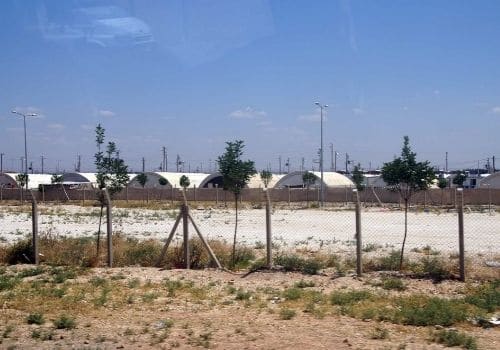
Workshop set to bring together academics to examine the humanitarian impacts of Europe’s current approach to immigration.
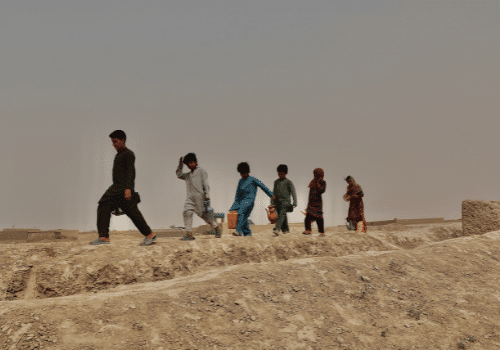
You can now view a recording of our webinar on the Afghan protection paradox emerging from the recent Taliban takeover in Afghanistan.
Last year, there were more battle-related deaths from state-based conflicts than in any year since 1984. In the same period, the total deaths due to disasters increased to 30,704, which was three times higher than in 2021. With the increasing impact of both conflicts and disasters, it has become essential to examine the interplay between these two phenomena and how they might mutually reinforce one another. This understanding serves as a valuable foundation to shape policies and responses of humanitarian organisations in both armed conflict and disaster settings.
Rather than being isolated events, disasters and violent conflicts are increasingly co-occurring, resulting in even more severe consequences. Just a few weeks ago, over 5,000 people lost their lives in Libya as a torrential rain caused two dams to burst near the coastal city of Derna. Before these relentless rains, Libya has been torn apart by years of conflict, rendering it ill-prepared to face the devastation of Hurricane Daniel. In the aftermath of the disaster several scholars, policymakers and practitioners argued the disastrous consequences of hurricane Daniel could have been prevented in Libya.
However, the recent experience in Libya is far from unique. Since the early 1980s, the number of countries experiencing both armed conflict and disaster in the same year has sharply increased. While between 1949 and 1958, 18% of countries experiencing armed conflict also experienced a disaster in the same year, this number was 81% in 2009–2018. Notably, in 2007 almost all the countries that engaged in an armed conflict (97%) also experienced a disaster. Because of this increased co-occurrence, it has become essential to ask if and how can armed conflict contribute to disaster vulnerability.
While qualitative investigations have explored how conflict can influence vulnerability to disasters, there is still a lack of systematic quantitative studies that provide broader evidence on the contribution of conflict to disaster vulnerability. Although existing qualitative work has made progress in understanding potential mechanisms, large-scale quantitative studies are crucial for comprehending the scope of this relationship and attempting to isolate associations between specific variables.
In a recent publication (together with Thea Hilhorst and Rod Mena), we present a statistical model using extensive large-N, cross-country data to address this research gap and analyse the conflict-disaster relationship. Based on data from 157 countries between 1989 and 2018, we found a strong positive correlation between armed conflict and disasters.
In countries experiencing armed conflict, disaster occurrence was observed 5% more frequently, and disaster-related mortality per year was 34% higher. While there is evidence that conflict can occasionally intensify disaster hazards, there is a greater evidence suggesting that the relationship between conflict and disaster operates through mechanisms that negatively affect vulnerability and response capacity.
Based on fieldwork experience and an extensive literature review, we find at least seven mechanisms by which armed conflict can increase disaster vulnerability:
The identification of these seven mechanisms is important for development and humanitarian institutions, practitioners, policymakers, and academics because understanding the links between these phenomena can enable more effective forecasting, planning and interventions to minimise the impacts of crises. Moreover, increasing the awareness of these seven potential mechanisms can also allow practitioners to reduce disaster risk in armed conflict settings.
Complementary to the study of the effects of armed conflict on disaster occurrence and their consequences, a small but growing body of literature also examines the reverse relationship, this is: Can disaster trigger or fuel armed conflicts?. However, to date, the results have been varied, contradictory or inconclusive.
In an effort to contribute to this pressing question, we (together with (Thea Hilhorst, Rod Mena and Elissaios Papyriakis) recently published the article: Does disaster contribute to armed conflict? A quantitative analysis of disaster–conflict co-occurrence between 1990 and 2017.
Our main results show that, despite a sharp increase in the co-occurrence of disasters and armed conflict over time, disasters do not appear to have a direct statistically significant relationship with the occurrence of armed conflict. And while some have argued that disaster diplomacy can occur on some occasions and contribute to peacebuilding in the aftermath of a disaster, the results of our model suggest that this does not happen frequently enough. Our study is a novel contribution, as it provides a fresh analysis with updated data and includes different control variables that allow for a significant contribution to the field.
As we understand that disasters do not actually trigger or fuel existing conflict but rather conflicts increase societies vulnerability to natural hazards, urgent action needs to be taken. In armed conflict settings, beyond ending the violence, communities need to be provided with a safe environment that allows them to prepare and reduce the risk of being affected by disasters. Not only should addressing disaster risks be given more immediate attention in the aftermath of war, we can also conclude that conflict prevention, resolution and peace building should be priority approaches to disaster risk reduction anywhere in the world.